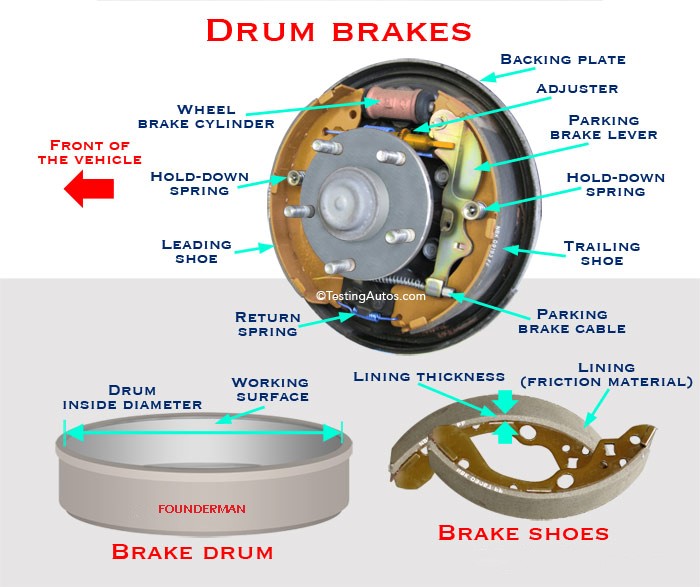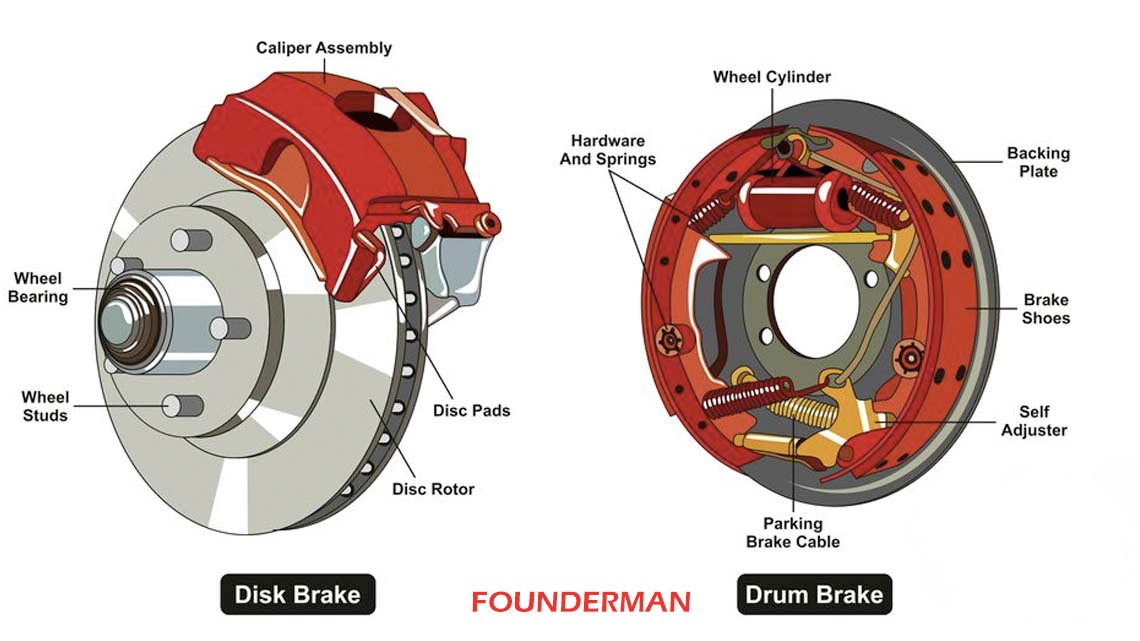The drum brake is a type of brake system that has been expelled because of the complication and weak functionality. However, classic vehicles still use this kind of brake. The only difference in their system is that drums are in charge of the duty of the rotor and pad.

How do Drum Brakes function?
The drum brake mechanism is straightforward. When the driver pushes the brake pedal, a hydraulic pressure is put to the brake oil that arouses the brake shoes in the cylinder and the brake pad, pressuring the drum. The outcome, which is a friction, will stop the brake drum.
Types of Drum Brake
In fact, drum brakes are designed in different models, which are:
- Duo-Servo
When the brake shoes pressure the drum for the first time, Duo-Servo brakes use the eccentricity power to produce a secondary pressure to the drum, so that the vehicle is stopped.
- Leading-Trailing
This brake type has a system that includes two types of brake shoes:
1. Leading brake shoe (at the front)
2. Trailing Brake Shoe (at the back)
The leading brake shoe spins at the direction of the drum, while the trailing brake shoe escapes the drum surface.
- Twin-Leading
This type 0f brake has two leading brake shoes that cause friction on the drum surface. The driver needs to put less pressure to use them, however, taking out the shoes from the drive requires a strong spring.
What is the difference between drum brakes and disc brakes?
Drum brakes use the internal friction produced by the shoe pressure on the drum to stop the car. Meanwhile, the disc brakes use an external collapse to put friction on the brake pads, located in the rotor.
In general, the drum brakes use internal friction, while the disc brakes use the external one.

